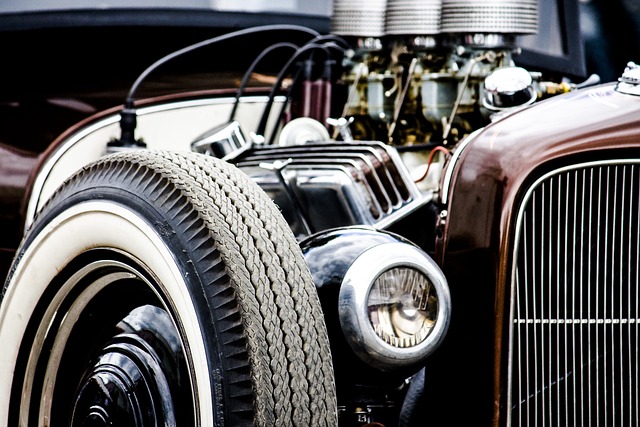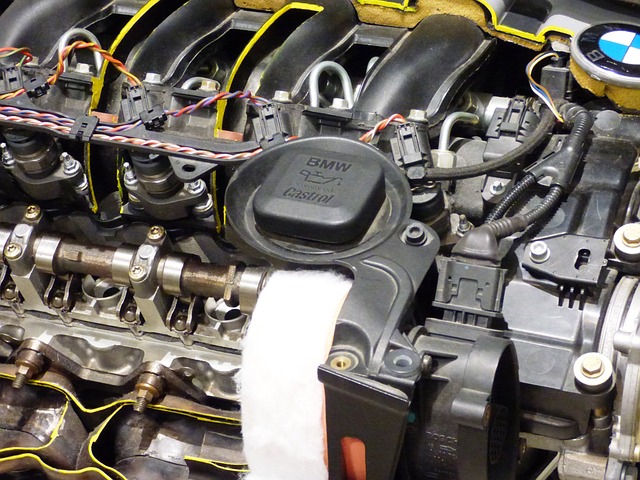Automobile engines are the powerhouses behind vehicle propulsion, translating chemical energy into mechanical energy. The dominant engine type is the internal combustion engine, which follows the Otto cycle and involves processes like air intake, compression, fuel injection, ignition, and exhaust release. Engine performance and efficiency hinge on precise engineering of components such as pistons, valves, crankshafts, and combustion chambers. Engineers optimize key factors like compression ratio and timing for better power-to-fuel economy balance. Modern advancements like direct fuel injection and variable valve timing enhance performance and adaptability to different driving conditions. The history of automobile engines reflects a journey from the late 1800s, with Nikolaus Otto's patent laying the foundation for gasoline-based engines, to the present day's focus on alternative fuels and electric vehicles. Throughout the 20th century, advancements such as the four-stroke engine, Diesel's improvements, superchargers, overhead-valve designs, muscle cars, electronic fuel injection, and engine management systems have shaped the industry, ensuring compliance with environmental standards while meeting performance demands. Today, automobile engines are evolving rapidly with the integration of hybrid technology and the shift towards fully electric vehicles, signaling a commitment to sustainability and innovation in transportation.
Automobile engines are the pulsing hearts of vehicles, driving innovation and progress across various industries. This comprehensive exploration delves into the multifaceted role these engines play in transportation, technology, and economics. From their foundational mechanics to the cutting-edge advancements shaping their future, this article illuminates the journey of automobile engine evolution, the science behind their operation, and their profound impact on our world. Join us as we navigate the intricacies of design, efficiency, emissions reduction, and the pivotal shift towards electric and hybrid propulsion systems. Understanding the importance of automobile engines is not just about the power they generate; it’s a testament to human ingenuity and its potential to forge sustainable paths forward.
- The Mechanics of Power: Understanding Automobile Engines
- Historical Evolution of Automobile Engine Designs
The Mechanics of Power: Understanding Automobile Engines

Automobile engines are the lifeblood of vehicular motion, serving as the primary source of power that propels cars, trucks, and motorcycles. At their core, these engines transform chemical energy from fuel into mechanical energy, which is then used to drive the vehicle’s wheels. The most common type of automobile engine is the internal combustion engine, which operates on a principle known as the Otto cycle. This involves drawing air into the cylinder, compressing it, introducing a fuel-air mixture, igniting the mixture, and finally expelling the resulting power to move the pistons and, consequently, the vehicle. The efficiency of this process is contingent upon the precision engineering of components like the pistons, valves, crankshaft, and combustion chamber.
The intricate mechanisms within an automobile engine are designed to optimize performance and efficiency. Engineers meticulously calibrate variables such as compression ratio, valve timing, and ignition timing to achieve a balance between power output and fuel economy. The design of the intake and exhaust systems is also critical for air-fuel mixture delivery and waste gas removal, respectively. Modern automobile engines incorporate advanced technologies like direct fuel injection and variable valve timing, which further enhance performance and adaptability across different driving conditions. Understanding these elements of automobile engines not only provides insight into their operation but also underscores the importance of ongoing innovation in engine design to meet environmental standards while maintaining the high-performance expectations of consumers.
Historical Evolution of Automobile Engine Designs

Throughout history, automobile engines have undergone a remarkable evolution, reflecting technological advancements and societal shifts. The journey begins in the late 1800s with the internal combustion engine patented by German inventor Nikolaus Otto. This marked the transition from steam-powered vehicles to those powered by gasoline. The Otto cycle engine, a forerunner of modern automobile engines, laid the foundation for what was to come. As the 20th century progressed, the development of the four-stroke engine became the industry standard, with significant improvements in power output and efficiency, largely due to the work of Rudolf Diesel, whose diesel engine offered an alternative fuel source that provided greater torque and was more efficient on lower octane fuels.
The interwar period saw further advancements with the introduction of superchargers, which increased the power-to-weight ratio of vehicles. Post-World War II, the focus shifted to mass production and accessibility, leading to the creation of the compact and reliable overhead-valve engine. The 1960s and 70s brought about the rise of the high-performance muscle car with large displacement engines, catering to both the automotive enthusiast and the growing American car culture. By the 1980s and 90s, the automobile engine had become more sophisticated, with electronic fuel injection and engine management systems becoming standard, improving performance while also meeting stringent environmental regulations. The 21st century has seen a significant shift towards alternative fuels and hybrid systems, as well as the advent of fully electric vehicles, showcasing the ongoing evolution and innovation in automobile engines. Each era’s design advancements have not only pushed the boundaries of performance and efficiency but also reflected the broader technological and environmental context of their times.
The study of automobile engines is paramount for the advancement of transportation technology. Delving into “The Mechanics of Power: Understanding Automobile Engines” reveals the intricate workings and the historical evolution of these engines, as detailed in “Historical Evolution of Automobile Engine Designs,” underscores their significant role in shaping modern mobility. As automotive technology continues to evolve, the importance of understanding and innovating within this field remains undiminished, ensuring that vehicles become more efficient, cleaner, and capable of meeting future challenges. The knowledge gained from these areas not only propels the industry forward but also contributes to a broader understanding of mechanical systems with far-reaching implications.
